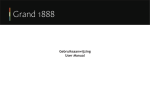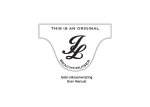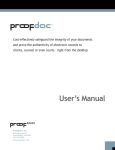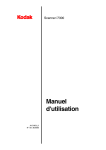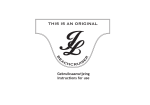Download user manual
Transcript
user manual 1 Content A beixo is a pretty normal bike, happy with some regular care and maintenance, but without the greasy chain. This manual will help you to keep your beixo bike in good shape and to get familiar with it. Every bike has it’s own character. Please read this user manual carefully before your first ride. For a summary in other languages, tips, parts and accessories: service.beixo.com 3 Important information for save use 4 First use / assembly 7 Shaft drive 8 Cleaning your bike 9 Take apart the rear wheel 9 Checklist 10 Folding bikes only 14 Warranty © 2013 2 Important information for save use Incorrect use of your beixo, insufficient maintenance or misuse can give rise to risks which may lead to serious injury. We highlight such possible risks in the typographic list below. The following Road Traffic Licencing Regulations apply to the use of the beixo on public roads. Below you will find a list of points which you should note for the sake of your own safety Caution! If in doubt, have all work on your folding bike carried out by your bicycle dealer. All bicycle components bent or damaged as a result of an accident or inappropriate handling must be replaced immediately due to risk of breakage (e.g. frame, fork, handlebar, handlebar stem, seat post, pedals or crank arms). Caution! The total weight permitted for the Beixo Compact folding bike is 100 kg. Loads exceeding the permitted total weight are not permitted. Advices Observe traffic regulations. Cycle particularly carefully in wet weather due to slippery road surfaces and the longer braking distance. Ride more carefully and brake early. In wet conditions the braking distance is two to three times longer. Avoid potholes, manholes and other dangerous road surfaces. Cross railway tracks and tram tracks at a right angle wherever possible. Bright, conspicuous clothing and reflective clothing increase your chances of being seen, particularly in poor visibility conditions. Adapt your speed to your cycling skills. In order to avoid accidents you should cycle in such a way which enables you to stop before unexpected obstacles. Wear a cycle helmet for your own safety. We recommend you wear a cycling helmet manufactured in accordance with the local regulations. Caution! The bike must be checked over before each ride. If defect, worn or broken components are discovered, they should be renewed immediately. Check the following: • Secure position of wheels and quick release device. • Secure position of seat. • Secure position and minimum insertion point of seat post. • Correct alignment and secure position of handlebar stem and handlebars. • Proper functioning of brakes. • Proper functioning of mounted active and passive lights. • Proper functioning of mounted bell. • Secure position of all screws, nuts and the pedals. • Tyre air pressure and tyre condition. Caution! Fold up the kickstand before each ride. Riding the bike with the stand down can cause serious accidents. Failure to properly maintain your bike voids your guarantee. Beixo is a registered trademark. 3 First use / Assembly Handlebar adjustment Saddle/Seat Post adjustment If you have received your beixo through a 3rd party and not a bicycle specialist, you will find a detailed description of how to prepare your bike below. Adding some grease on some bicycle parts before mounting is advisable. There are two kinds of handlebars used by beixo: the normal one and the so called A-head. For the normal handlebar/ stem: loosen the stem with a 6 mm Allen key. Put the stem into the bike in such a way that the safety line is no longer visible. The steering tube can be adjusted as follows: Loosen the expander bolt by 4 turns with a 6 mm Allen key (sometimes it will need a little tap on the head); set the correct height and secure the bolt again with the 6 mm Allen key; check that the handlebars are secure and fix the cap or plug again. The angle of the handlebars can also be set to the desired position. Loosen the clamp bolt by a little more than a turn. Rotate the handlebar tube into position and tighten the bolt again thoroughly. Take some effort to put your saddle in the right position because this influences the quality of riding a lot. There are a few of ways to get the right saddle height. One way of doing it is to sit on the bike with both feet on the pedals put it in a rack or lean against a wall. Place your pedals in the 6 o’clock and 12 o’clock position. Your bottom leg should be fully extended with the heel placed on the lower pedal. If it’s bent, raise the saddle. If you have to rock your hips to reach, just lower the saddle. The pedals Right Turn the right pedal (with the character R) manually in the right crank on the cardanw side. The right side is the side of the bike where the shaft drive is located. Then tighten it with a 15 mm flat key, turning it clockwise. Left Turn the left pedal (with the character L) manually in the left crank. Then tighten it with a 15 mm flat key, turning it counter clockwise. 4 A-head The stem is mounted directly on the fork front and fixated by Allen bolts, on the side and the other on top. To adjust the direction of the handlebar stem turn loose the Allen bolts on the side, turn the stem and fasten the bolts tightly. The idea is that when you correctly position your foot on the pedal, your knee is just slightly bent at the bottom of the rotation. Also make sure you don’t raise the seat post beyond the manufacturer’s recommended height as it could become unstable and even break off when riding. Horizontal saddle position The horizontal position of the saddle will determine how your body is balanced which will also dictate how comfortable and effective you are on the bike. One way of positioning the saddle is to check this distance by putting your elbow on the nose of the saddle and your fingertips on the handlebars – they should just touch. Of course this differs in certain frames/arm lengths. Saddle tilt The saddle tilt is also important. The general rule is to set the saddle parallel to the floor. Whatever position you want to try, test it out for a week or so, change it again slightly and try it again until it feels comfortable. There is a simple rule for the correct position of the saddle: with the pedal down your leg must be stretched but not locked. Putting your saddle too high will cause sliding and strain on your back. On the other hand, a too low saddle causes strain in the knees. adjustment. Only then there will then be sufficient length in the frame tube to prevent breakage. By loosening the saddle fixing bolt you can tilt the saddle as well as adjust it backwards and forwards. After everything has been adjusted, tighten all the nuts and bolts securely. Seatpost lubrication For folding bikes. To ensure the seatpost continuous to go up and down smoothly its advisable to spray the seatpost occasionally with silicon spray. This attracts no dirt as it dries. B ra ke s Never put the saddle higher than the safety marks on the seat post! We at beixo use 4 different brake types: the V-brake, the coaster brake, the disc brake and the roller brake. Safety rules Check regularly if the brakes work as they should. Are the brake blocks and bolts secure? Are the cables intact and do they not show any strong bends or fraying? During rainy weather your braking distance increases. On longer slopes pump the brakes to avoid overheating. When there is something wrong with your brakes stop riding! Seat post adjustment Never put the saddle higher than the safety marks on the seat post. These marks must not be visible after the 5 6 Gears Coaster brake / Disk brake Corrective work on the coaster brake can only be performed by a specialist. Adjustment of the Nexus-3 Set the gear change to position 2. Check if the yellow mark inside the gear indicator on the bell crank is aligned between the two yellow lines on the window. If they are not opposite, loosen the nut(1) and set the position with the cable adjusting bolt(2) and nut on the bell crank. SET Rollerbrake The Shimano® Nexus Rollerbrake need little maintenance and is sealed optimally against dust and moisture. If the brake levers touch the handlebars when applying the brakes the cable should be tightened. This can be done with the cable setting screw on the brake lever. Roller brakes must be greased with special grease, a job to be done only by the bicycle specialist. Advice: to be able to change the gears with certainty and to spare the mechanism it is recommended not to continue peddling with full power during a gear change. Should in the course of time your gear jump spontaneously or make a cracking sound then just ride to a specialist. He can correct the problem quickly. Important: Hubs should not have too much play. This causes unnecessary wear. SET V-brakes Adjustment and maintenance of the V-brakes. The brake blocks should be replaced if the oblique notches are worn. Rims have their own character and the blocks fitted form with them a safe unit. A bicycle specialist has the correct type of brake blocks in stock. To change the blocks, first turn the cable setting screw of the brake lever inward to release the tension of the cable. Push the brake blocks towards each other. Pull the brake cable free. Now you can unfasten the bolts holding the blocks easily. When fitting and adjusting the new blocks they should end up at 1-2 mm from the rim. Re-attach the brake cable. The brakes are adjusted correctly if the brake levers cannot be moved further than half to three-quarters of their travel. If you can move them further, then adjust them by turning the cable setting screws on the brake levers. If the brake is not set tightly enough for a V-brake you can loosen the cable clamp bolt using the Allen key and pull the cable a little upwards. This bolt also gives access to the cable to replace it. 1 2 Adjustment of the Nexus-7 Set the gear change to position 4. Take of the plastic protection cap to see the rear gear and the cassette joint. There are two yellow setting lines. Check if the yellow marks are aligning. If they are not, adjust the position with the adjusting barrel on the grip shifter. Shaft Drive Steel ring The shaft drive system is designed to last many, many kilometers. The system is low on maintenance and with the right attention it will last for years. For the maintenance that does occur beixo provides a shaft drive maintenance kit through it’s webshop. Essential for the shaft drive is to check Protection cap regularly if it’s mounted in the frame tightly. Check if there is any movement on the front side of the shaft drive. If there is, tighten the steel ring on the left side of the shaft drive. First loosen the two locking screws. Lubrication Depending on the riding conditions you have to lubricate the rear shaft drive gear and the sprocket every now and then. As soon as the gears make a dry sound when turning the pedals reverse, some greasing is needed. To reach the gears take of the grey plastic protection cap. Then put some ball bearing grease on the gear by turning the pedals reversely. We recommend Shimano ball bearing grease. This grease is included in the Beixo shaft drive maintenance kit. To extend the life of the shaft drive we recommend to clean and change the oil of the front gears every year or 10.000 kilometers. An instruction can be found on the next page. 7 Changing the oil 8 1. Put a reservoir below the pedals shell to collect the oil. Take off the Allen bolt form the bottom side of the bracket shell and let the oil pour out. 2. When the bracket shell is empty put the bike up side down and insert some cleaning fluid in the bracket shell. This can be diesel or turpentine. Turn round the pedals for about three minutes in order to clean the gears. 3. Put the bike back on it’s wheels carefully and let the fluid pour out in the reservoir. You can repeat this step if you think there is still dirt inside. 4. Put the bike up side down again and insert 50 ml oil in the bracket shell. The oil is included in the beixo shaft drive maintenance kit. Tighten the Allen bolt again and the bike is ready for use again. Important: Do not open the shaft drive system yourself. This will void your warranty. C l e a n i n g y o u r b i ke By keeping your beixo clean, you’ll enjoy it much longer. First use a soft brush to remove the dirt. Next go to work with warm water mixed with a mild liquid soap and a soft cotton cloth. In case of rim-brakes it’s important to keep the rims free from salt or sand in the winter period. Clean rims last much longer. Tires Allen bolt It is impossible to make a general recommendation on inflation pressure for a specific bicycle or a particular tire. The “right” inflation pressure depends mainly on the load exerted on the tire. The permitted inflation pressure range is marked on the tire sidewall. Make sure the actual tire pressures never is higher or lower than the maximum and minimum inflation pressures. Take apart the rear wheel Checklist: 1. Turn the bike upside down so the wheels are upward and the handlebars are resting on the ground. • Do the brakes work as they should? Are the brake blocks and bolts secure? Are the cables intact? 2. Release the lock nuts holding the back wheel onto the fork of the bike frame. Use a 15 mm wrench and work slowly to avoid damaging the thread of the nut. Pay good attention to the order of the washers. These need to be in the exact order when placing back the wheel. • Are the spokes at the right tension? • Are the saddle tube and steering tube not higher than the safety markings? • All the nuts and bolts tightened securely? 3. Disconnect the brake cable and, in case of V-brakes, open them. 4. Remove the plastic protection cap by loosening the two screws. • Is the tread of the tires not worn out, are there any weak spots or bulges and is the pressure right? • Are the steering tube and the handlebars secure? Is there any play in the steering head? • Are the hand grips still firmly in place and do the gears still work flawlessly? 5. Pull the back wheel out of the fork and lay it flat on table. When placing back the wheel, first tighten the nut on the right side of the bike. 9 F o l d i n g b i ke s o n l y … Quick releases (QR) Foldable handle bars A folding bike is designed to fold. A cliché, but it’s an important feature of the bike that makes it different in use and maintained. Thanks to the quick release levers, the folding procedure is easy, fast and clear. Please take some time to inform yourself about the do’s and don’ts of this specific range of bicycles. For quick adjustment or mounting and dismantling, your bike is equipped with several quick releases. Open the big QR lever on the top. Carefully pull out the two ends of the handle bar and fold them backwards. Close the QR to keep the arms together. To close the handle bars open the QR, put the arms straight and push them inwards. Important features of the beixo folding bikes: • • • • 10 Quick release levers and folding boxes Adjustable seat post Adjustable handle bar stem Foldable pedals Caution! For the sake of your safety, the quick release must be used with extreme caution. Insufficient tightening of the quick release can cause serious accidents. Loosening the quick release: Swivel the bolt lever 180° so that “OPEN” inscription faces outwards. Turn the rating nut in an anticlockwise direction to further loosen the quick release device. If it can be so easily tightened that the bolt lever can be turned with the fingers, loosen the bolt lever again and tighten the rating nut by turning it around halfway (in a clockwise direction). Warning: Close the QR thoroughly before riding the bike. The folding procedure b e i xo c o m p a c t 1. Stand on the left side of the bike, fold in the kick stand; 2. Fold the pedals by pushing the pedal inwards and fold it down; 3. Open the quick release lever on the handle bar stem, press the security button and fold the handle bars down; 4. Open the central quick release lever on the frame tube, open the security handle by pulling it upwards and fold the frame. 5. Open the quick release lever and push the saddle down. Close the quick release lever to keep the saddle down. The unfolding procedure b e i xo c o m p a c t 2 3 4 1. Lift the security handle on the central hinge and close the frame. Close the central quick release lever tightly. 2. Push the security button on the stem and close the handle bars. Close the quick release lever tightly. 3. Open the quick release lever on the saddle, pull it up and close the lever tightly. Never pull the seat post further out of the frame than the maximum safety height marks on the seat post indicate. 4. Unfold the pedals and off you go 5 11 12 13 Wa r ra n t y Article 1 Warranty 1.1 beixo / Urban Bike Concepts b.v., hereafter beixo, guarantees that their bicycles are free of construction and/ or material defects and any other points which are covered within these warranty conditions. 1.2 The warranty can only be claimed by the first owner. 1.3 The warranty expires in accordance with the articles 3 and 5. 1.4 The warranty cannot be transferred to a third party. 1.5 The by beixo granted warranty conditions in no way limit the ability of the purchaser to address the vendor under normal legal conditions as defined by local civil law. Article 2 Warranty Period 2.1 On all beixo bicycle frames a warranty of three (3) years is given for construction and/or material defects. On the shaft drive system we provide a two (2) year warranty period. 2.2 Their will be no warranty extended on normal wear and tear parts such as tires, gears, cables and brake pads except 14 where construction and/or material defects have been identified. Article 3 Warranty Exclusions 3.1 In the following cases warranty will be lost. a) Improper and/or unjust use of the bicycle according to the designed purpose. b) The bicycle has not been maintained in accordance with user manual instructions. c) Technical repairs have not been carried out in a professional manner. d) The fitting of aftermarket parts which do not meet technical specifications or have been incorrectly fitted. e) Proof of purchase is missing or has not been signed by the vendor. f) The warranty card has not been, or improperly filled-out or sent within the given time frame. 3.2 Further responsibility is irrefutably denied by beixo for damage to the bicycle or parts thereof as a result of: a) Defective adjustment of handle- bars, handlebar rod, saddle, saddle rod, gear change mechanism, brakes, quick-release mechanism of wheels and saddle; b) The untimely replacement of parts such as brake and gear change mecha- nism cables, brakes, tyres, and cogs; c) Climatological influences such as normal discoloring of paint. Article 4 Warranty-parts 4.1 During the warranty period all parts which have been identified by beixo as suffering from construction and/or material defects, will be repaired or reimbursed by choice of beixo. The eventual costs of (de-) assembly are to be borne by the owner. 4.2 Cost of transport of the bicycle and/ or parts thereof to and from beixo will be borne by beixo if the parts in question are subject to warranty. 4.3 Should the part in question for warranty no longer be in stock or deliverable, beixo will arrange for at least an equally valuable alternative part. Article 5 Claiming Warranty 5.1 Claims under this warranty need to be presented with the bicycle or the related part thereof for inspection by a beixo approved specialist together with proof of purchase. Article 6 Responsibility 6.1 An accepted warranty claim does not automatically mean that beixo accepts any responsibility for any eventual damage that may have occurred. The responsibility of beixo never extends beyond the conditions as described within these warranty conditions. All claims for responsibility of beixo for resulting damage will be categorically denied. On all offers, agreements and execution of agreements by the seller, strictly Dutch Law applies. The Vienna Treaty 1980 (CISG) concerning the international sale agreement with regards to movables is explicitly ruled out. 17.2 All disputes regarding or arising from an agreement to which these terms apply, or to the terms in itself and its execution or interpretation, may exclusively be settled by the Dutch judge who is competent in the area the seller is established. beixo / Urban Bike Concepts b.v., Dorpsstraat vo Steenstraat 33, 3732 HG, De Bilt, The Netherlands [email protected] www.beixo.com 15 16
















